Mental (Licensed House)
In 1844 the Asylum contained 14 patients.
Edward Tuke died in 1846 and, in 1849, Mary Tuke took over the license and continued to run the Asylum with her eldest son, Dr Thomas Harrington Tuke (1826-1888), who became its physician. The Tukes were Quakers who believed in humane treatment of the insane. Patients were treated with holistic methods and remedies, where possible, in the hope they would provide a cure. Dr Tuke introduced hydrotherapy, and also nasal feeding (food refusal was quite common in asylum patients).
In 1851 the Asylum contained 5 elderly females and 8 mainly elderly male patients. The latter were from the professional classes - two merchants, a banker, a surgeon, a stockbroker, schoolmaster and a Captain and a Major from the East India Company. Great care was taken to maintain their general health and comfort. Instead of being kept under control by the use of straitjackets, handcuffs or hobbles, their patients were allowed to move freely around, and even leave the Asylum. Five female nurses and 5 male servants were employed, as well as a cook, a housemaid and a laundress. The high staff ratio enabled the patients to be supervised while still remaining at liberty.
The Tukes had been influenced by Dr John Conolly, Resident Physician at the Middlesex County Asylum at Hanwell, who introduced the principle of non-restraint of the patients. Thomas Harrington Tuke had studied under Conolly and, in 1852, married one of his daughters - Sophia Jane Conolly. They had two sons - Thomas Seymour Tuke (1856-1917) and Charles Molesworth Tuke (1857-1925) - who both eventually qualified in medicine and joined the family business.
In 1859 the Asylum contained 31 patients - 11 male and 31 female - suffering from a range of mental disorders, from 'brain lesions', delusions, psychosis to epilepsy.
By 1875 patients accommodation had been increased and the Asylum was licensed for 40 patients.
In 1893 the Asylum moved to Chiswick House, a neo-Palladian villa, which the 9th Duke of Devonshire had leased to the two Tuke brothers - Thomas Seymour and Charles Molesworth - the previous year.
The Asylum was licensed to take 35 patients, at a charge of about £300 a year. The two wings of the villa, which had been added in 1788, served as their accommodation. The Commissioners in Lunacy found the rooms to be warm and comfortable and the patients well fed. The beautiful and spacious grounds were well used by the patients for exercise. The main building contained an 'acute wing', a surgery, a consulting room, a Nurses' Mess and staff accommodation.
In 1901 the Asylum contained 34 patients and 48 members of staff, not including the Tuke family and their own household staff. Treatment concentrated on therapeutic methods rather than medication or restraint.
In 1928 the Asylum moved to Terrilands in Pinner, a large country mansion with extensive secluded grounds. Terrilands was renamed Chiswick House and continued as a nursing home for the treatment and care of mental illnesses, including alcohol- and drug-dependence, in both sexes. Dr Douglas Macaulay was the Medical Superintendent.
In 1945 the weekly charge was 10 guineas (£10.50), rising to 12 guineas (£12.60) by 1953. Modern treatment methods - psychotherapy, electro-convulsive therapy, modified insulin therapy, narco-analysis and occupational therapy - were all offered.
The nursing home closed around 1964.
Present status (September 2011)
The first Asylum, Manor House, was demolished in 1896.
In 1929 the 9th Duke of Devonshire sold Chiswick House in Burlington Lane to the Middlesex County Council. It became a fire station, with Green Goddess fire engines parked on its forecourt. During WW2 (1939-1945) the building suffered vibration damage from heavy bombing in the Chiswick area. In 1944 the first V2 rocket to hit London landed in nearby Staveley Road, killing three people and damaging one of the wings of the house. After the war, in 1956 the patients' wings and many of the outbuildings were demolished by the Ministry of Works (which later became English Heritage). The grounds were opened to the public in 1958, while the House underwent a 10-year long restoration. The Grade I-listed building became the responsibility of English Heritage, while the London Borough of Hounslow maintained the grounds. In 2005 Hounslow Council and English Heritage formed the Chiswick House and Gardens Trust to unify management of both sites. Following a £12m restoration of the gardens, the Trust took over their administration in July 2010.
The third and final site of the
Asylum in Pinner was demolished in the late 1960s. Bloomsbury
Municipal Housing Society was granted planning permission to build 64
apartments and 60 garages. Bloomsbury Court now stands on the
site of the mansion and Chiswick Court on the site of its grounds.

The second site of the Asylum - Chiswick House - as seen from Burlington Lane (above and below).
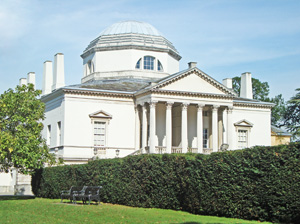
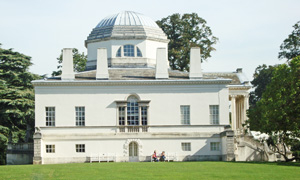
The southern elevation of the building (the front entrance is on the right), as seen from the lake.
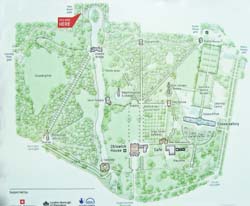
The current plan of the House and its grounds.
N.B. Photographs obtained in October 2009

Bloomsbury Court now occupies the last site of the Asylum in Pinner.
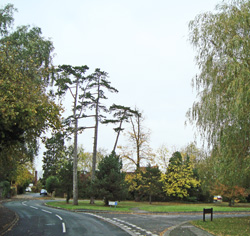
The entrance to Chiswick Court.
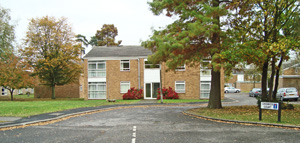
Chiswick Court (above and below) was built in the grounds.
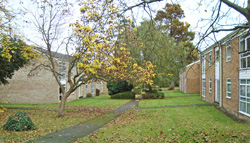
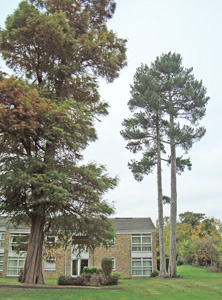
Mature trees (above and below) remain on the site.
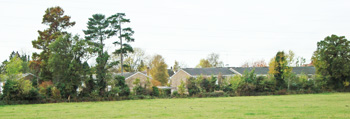
Poulton K 1980 The Tuke family and their Chiswick Asylums. Brentford & Chiswick Local History Journal 1.
Shorter E 2005 A Historical Dictionary of Psychiatry. Oxford University Press.
http://blog.wellcomelibrary.org
http://chfriends.org.uk
http://historyof.place
http://museumofthemind.org.uk
http://openbuildings.com
http://wellcomelibrary.org
http://virtualvictorian.blogspot.co.uk
https://bethlemheritage.wordpress.com
https://en.wikipedia.org (1)
https://en.wikipedia.org (2)
www.britainfromabove.org.uk
www.british-history.ac.uk
www.doricdesign.com
www.studymore.org.uk
Return to alphabetical list
Return to home page